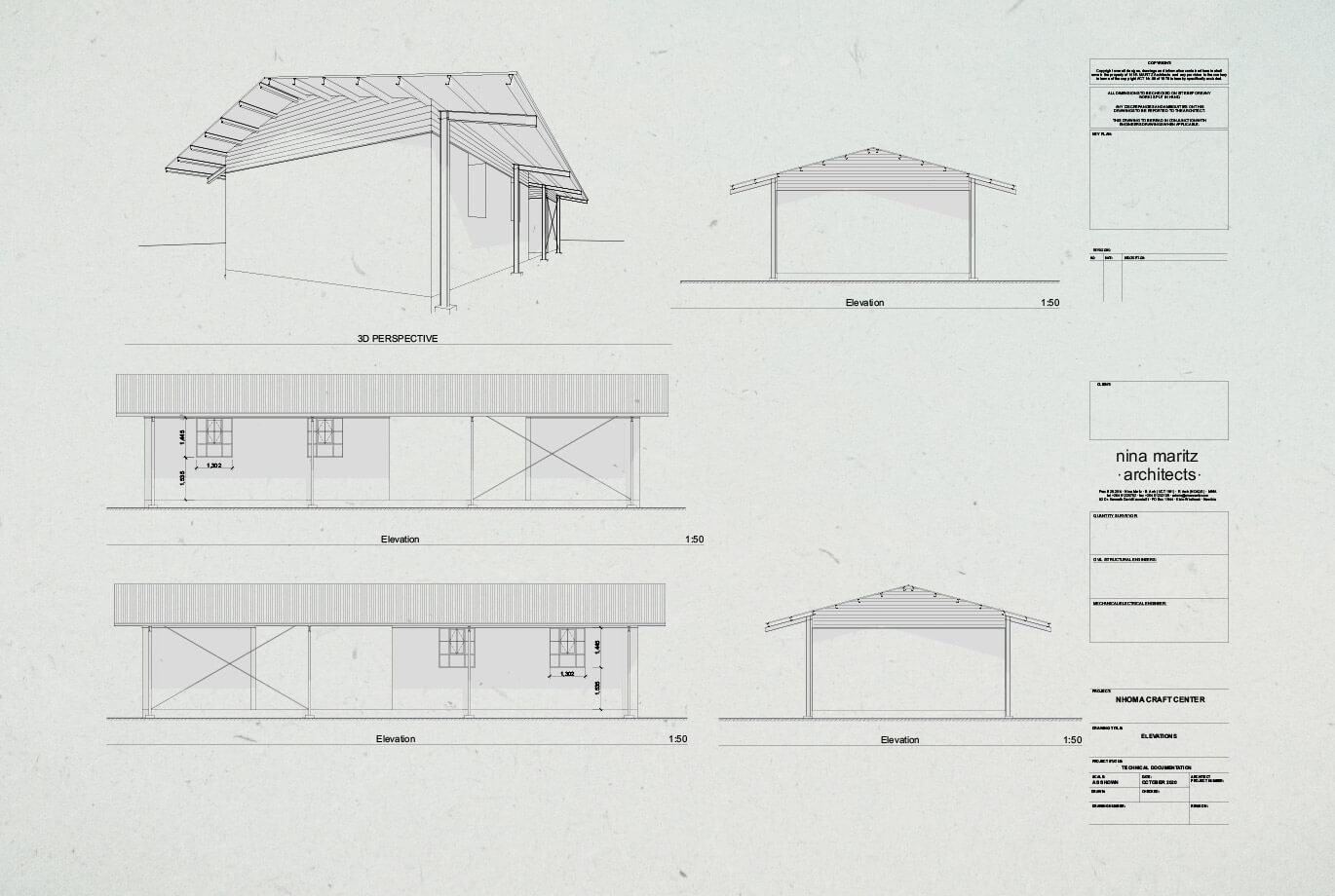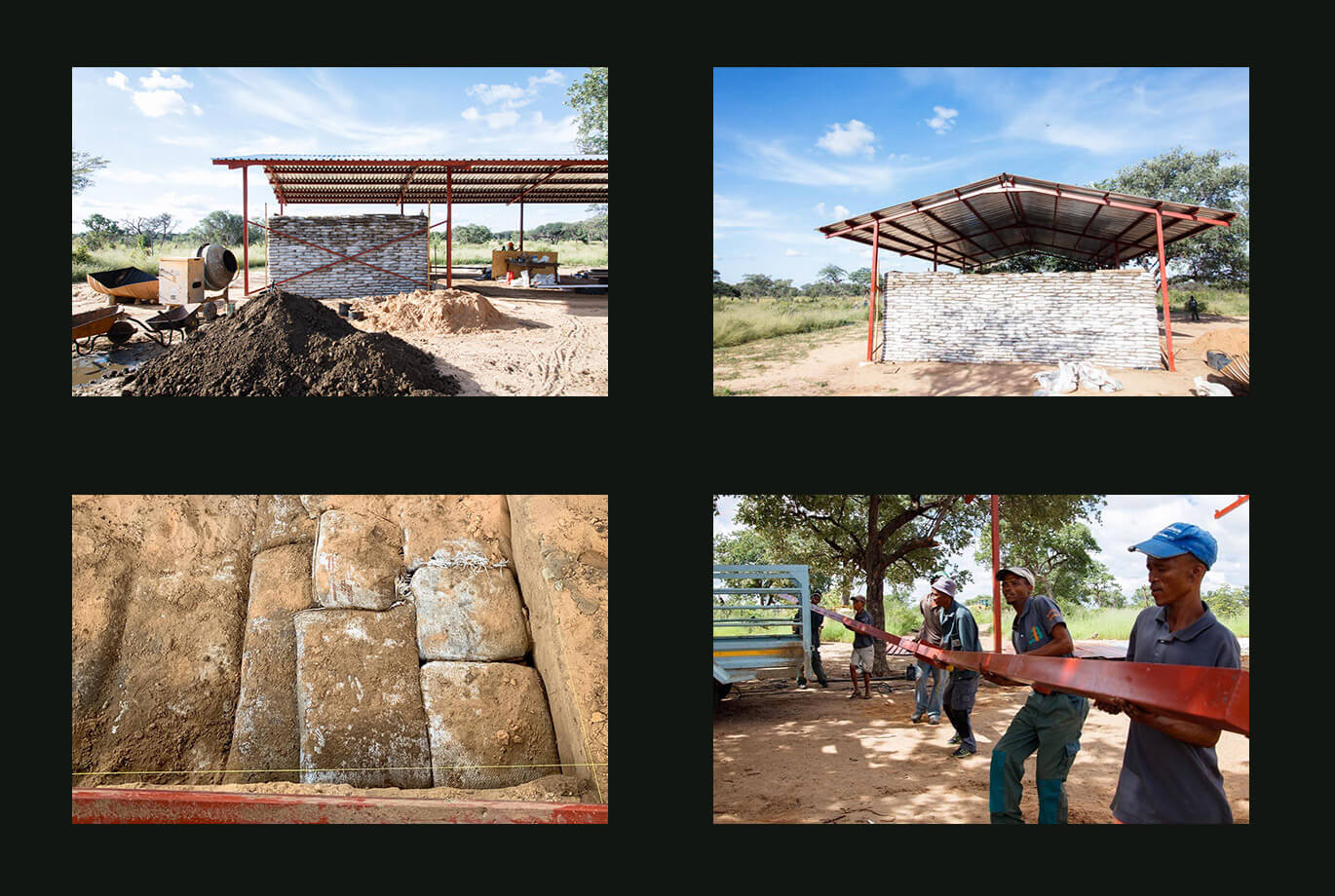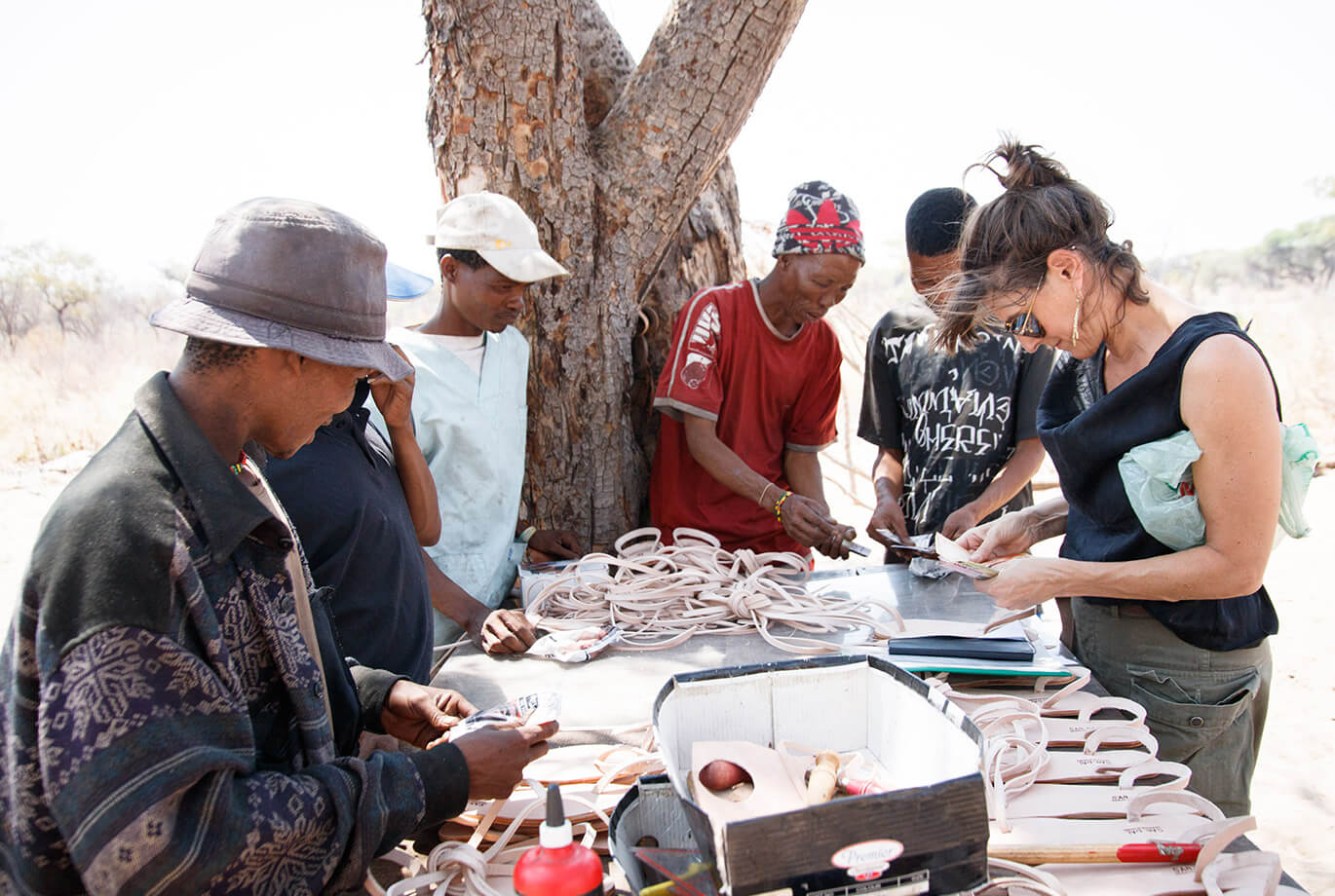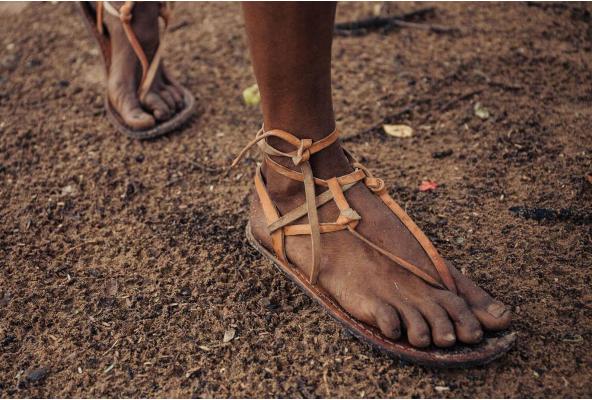!Aice, one of the cobblers, walking in n!ang n|osi eland antelope sandals. Nyae Nyae, Namibia, 2018. © Thomas Nolf
In the Kalahari Desert in Namibia the Ju'/hoansi San people are once again producing the hunting sandals their ancient ancestors wore.
Produced from ethically sourced eland skin (the largest antelope in Africa), the sandals are designed for both everyday use and the dying art of persistence hunting: using tracking and endurance running to pursue an animal until it collapses from heat exhaustion.
Back in 2016 we launched a Kickstarter campaign to set up a shoemaking workshop with the Ju'/hoansi San people. Since then we have been working alongside them and the Future Footwear Foundation (FFF) to sustain sandal production as a source of cultural expression, training, employment and durable footwear.
Future Footwear Foundation has been a Vivo impact partner for five years. It’s overarching aim is to develop footwear that is sustainable for the environment and the body by establishing a (mostly virtual) future-footwear centre serving as an cross-disciplinary hub for interaction between artisans, academics and businesses. In 2018 we celebrated the launch of Barefoot Cobblers, a book by FFF, marking a milestone in biomechanics and anthropological design research. You can also read blogs on our work with FFF here and here.


Copyright of the images: David Willems @davidwillemsphoto
Despite this work, the Ju'/hoansi San cobbers’ need a new facility. Since their last workplace burned to the ground in 2017, the shoemakers have been working in the shade of trees, storing leather and finished products in a temporary shelter built of scrap material and wood.
In the meantime, through a collaboration between the community, FFF and Belgian architect Bruno Spaas, an outline for an ideal new workspace has been developed. It includes a small, dark storage space, a bigger working space and a shaded area for working outside, as the local cobblers prefer to do.
But a lack of funding halted construction.
Halfway through 2020 sandal production paused due to the pandemic. This was the perfect time to build the proposed construction.
While investigating how to ensure the building would be as environmentally friendly as possible, the community opted for earth-bag architecture: a technique that uses local soils to build fast, strong structures that we believed was achievable with the resources available in the environment.
In combination with the Kalahari sands, the clay-rich soil in the local omuramba (dry riverbed) would make a durable mix with which to fill polypropylene bags as building blocks for strong, thermal mass walls.


Copyright of the images: David Willems @davidwillemsphoto
Bruno Spaas’ initial design was passed on to Nina Maritz - an award-winning Namibian architect specialising in sustainable and vernacular architecture (which is characterised by the use of local materials and knowledge). Nina Maritz drew the building details: an iron farm-shed structure to roof the eighteen-metre workspace, walled with 70 cm earth bags.
A team completed soil tests by digging along the omuramba to determine the best accessible clay. A group of seven local shoemakers then got to work, turning their cobbling skills to making perfect earth-bag bricks to partition their new workspace.
With the logistical and technical skills of David Willems, the building shot up by fourteen centimetres per day. By the end of March, the cobblers had layered earth-bag walls three metres high. Small windows were installed at the top to allow minimal light in.


Copyright of the images: David Willems @davidwillemsphoto
With donations from an array of institutions, Future Footwear Foundation was then able to fund the steel-frame roof and the first storage building. This was installed in January 2021 by a local contractor.
As a finishing touch, the building will be plastered with locally harvested termite clay, which gives the strongest plaster due to its high clay content and natural glue component.
The new workspace is a testament to the local environment and the resourcefulness of the Ju'/hoansi San cobblers. It will provide a sustainable space for them to continue using their ancestral knowledge to produce the original barefoot shoes.
Copyright Thomas Nolf
Images from the book: Do You Want Your Feet Back? Barefoot Cobblers
Els Roelandt & Catherine Willems (eds.)

